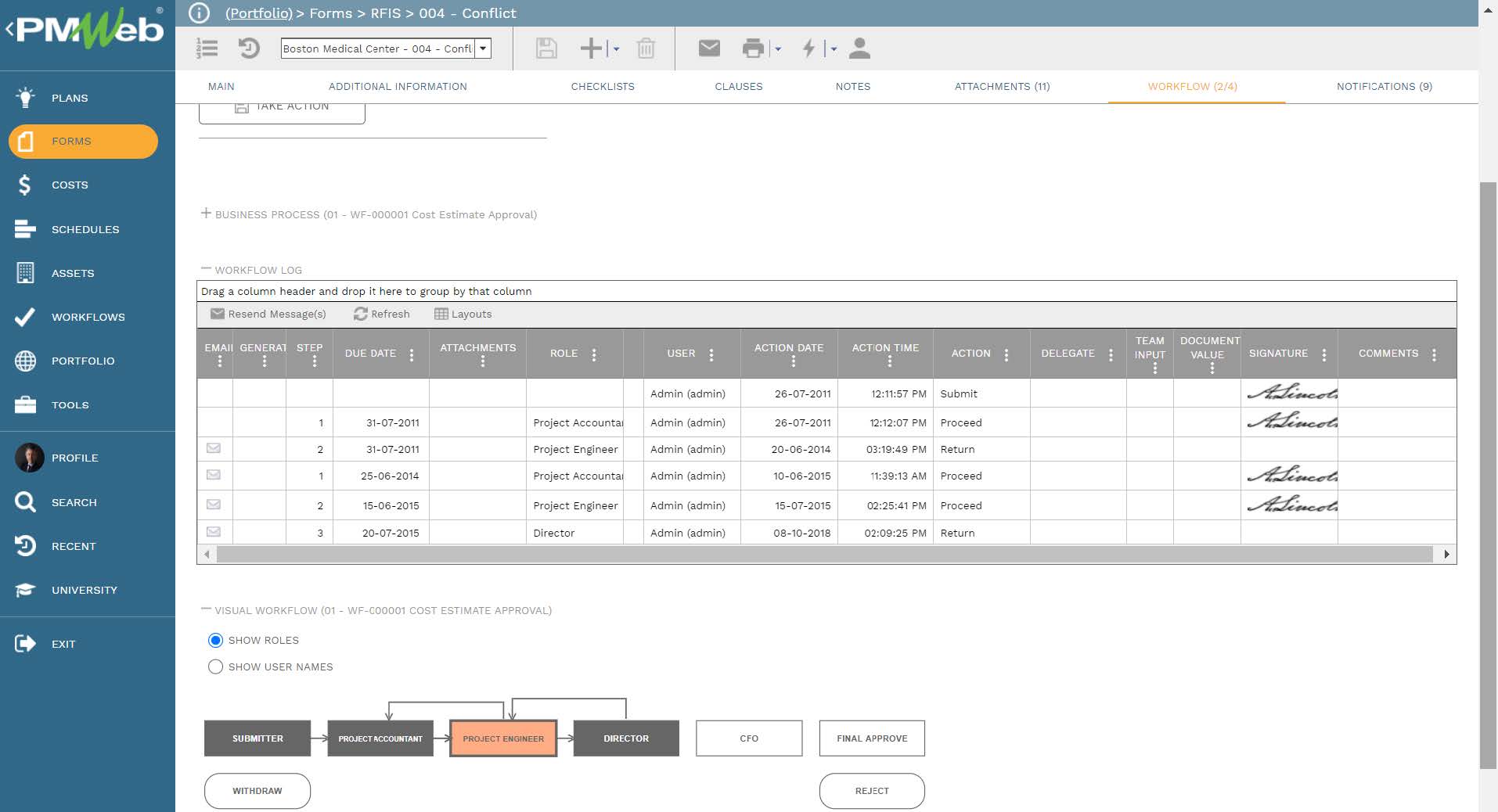One of the major challenges that face organizations that are involved in capital construction projects delivery is determining the actual cost value at the end of each financial period. The challenge stems from the fact that most financial systems only recognize actual costs for work in place, delivered materials, and other expenses that had been invoiced for and approved. In other words, invoices that although were submitted but not yet approved as well as approved work in place and delivered materials that were not yet invoiced are not be accounted for. Therefore, using the information from the financial system for financial performance reporting can be very much misleading. To get around this problem, organizations use an “adjusted actual cost” value for reporting actual costs (AC). The adjusted actual cost uses the actual cost from the financial system, plus an estimate for outstanding invoices for work accomplished and not invoiced completed work on-site and materials delivered, which are called accruals. The accruals are usually estimated by the project team who has an understanding of the extent of the completed scope of work that is not covered by the approved invoices.
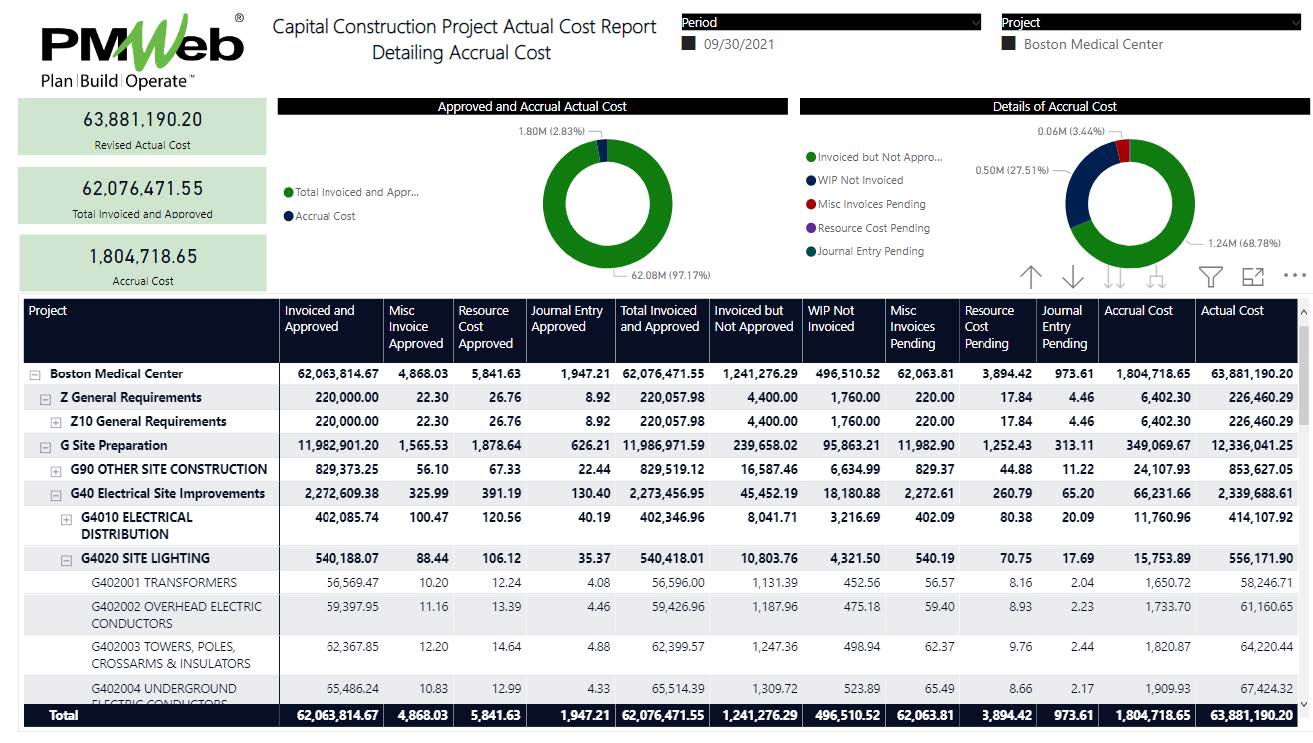
To explain the extent of inaccurate financial performance reporting that could occur if the accruals estimate were wrong assumes that this reporting is based on the earned value method (EVM) for which financial performance is based on the schedule performance index (SPI), cost performance index (CPI) and variance at completion (VAC).
The SPI measure depends on the project value or Budget at Completion (BAC), the Planned Value (PV) of spending which is available from the cost-loaded schedule, and the Earned Value (EV) for work in place and procurement activities which is based on the percent complete (%) value for each activity multiple by its Budget at Completion (BAC) value as per the project schedule. The percent complete earning rules are usually determined and agreed on when the project’s cost-loaded baseline schedule is approved.
On the other hand, the CPI and VAC measures depend on the Actual Cost (AC) incurred for the earned progress. Unlike PV and EV where the source is the project schedule, the AC depends on all submitted and approved invoices, invoices submitted but not yet approved and value of approved in place, and materials delivered but not invoiced. Invoices can include invoices for work in place, materials delivered, and miscellaneous invoices. The VAC is the difference between BAC and the Estimate at Completion (EAC) which depends on the AC value plus the Estimate to Complete (ETC) which is the difference between BAC and EV. Nevertheless, the ETC could be subject to adjustment to reflect expected future performance by using the CPI and SPI measure values. In other words, the CPI and VAC values could be wrong and misleading if the estimated accrual cost for invoices submitted but not yet approved and value of approved in place and materials delivered but not invoiced was not accurate.

Using a Project Management Information System (PMIS) like PMWeb gives users all the cost management business processes required to deliver capital construction projects and produce the earned value financial performance reporting readily available out of the box. Assuming that the Planned Value (PV) and Earned Value (EV) are made available using the project’s planning and scheduling software and not PMWeb, then the remaining value extracted from PMWeb is the Actual Cost (AC). The actual cost includes the actual cost of all submitted and approved interim progress and miscellaneous invoices. In addition, it includes submitted interim progress and miscellaneous invoices but not yet approved. Further, the actual cost includes the cost of approved work in place and material delivered on-site but not invoiced as well as consumed labor and equipment resources hours that are included in commitment contracts. PMWeb commitment progress invoices module is the first business process used to capture the actual cost of all submitted and approved as well as submitted but not yet approved interim progress invoices. PMWeb allows detailing and linking the progress invoices line items with the project schedule activity they are associated with. The status field determines if the invoice was approved or submitted.
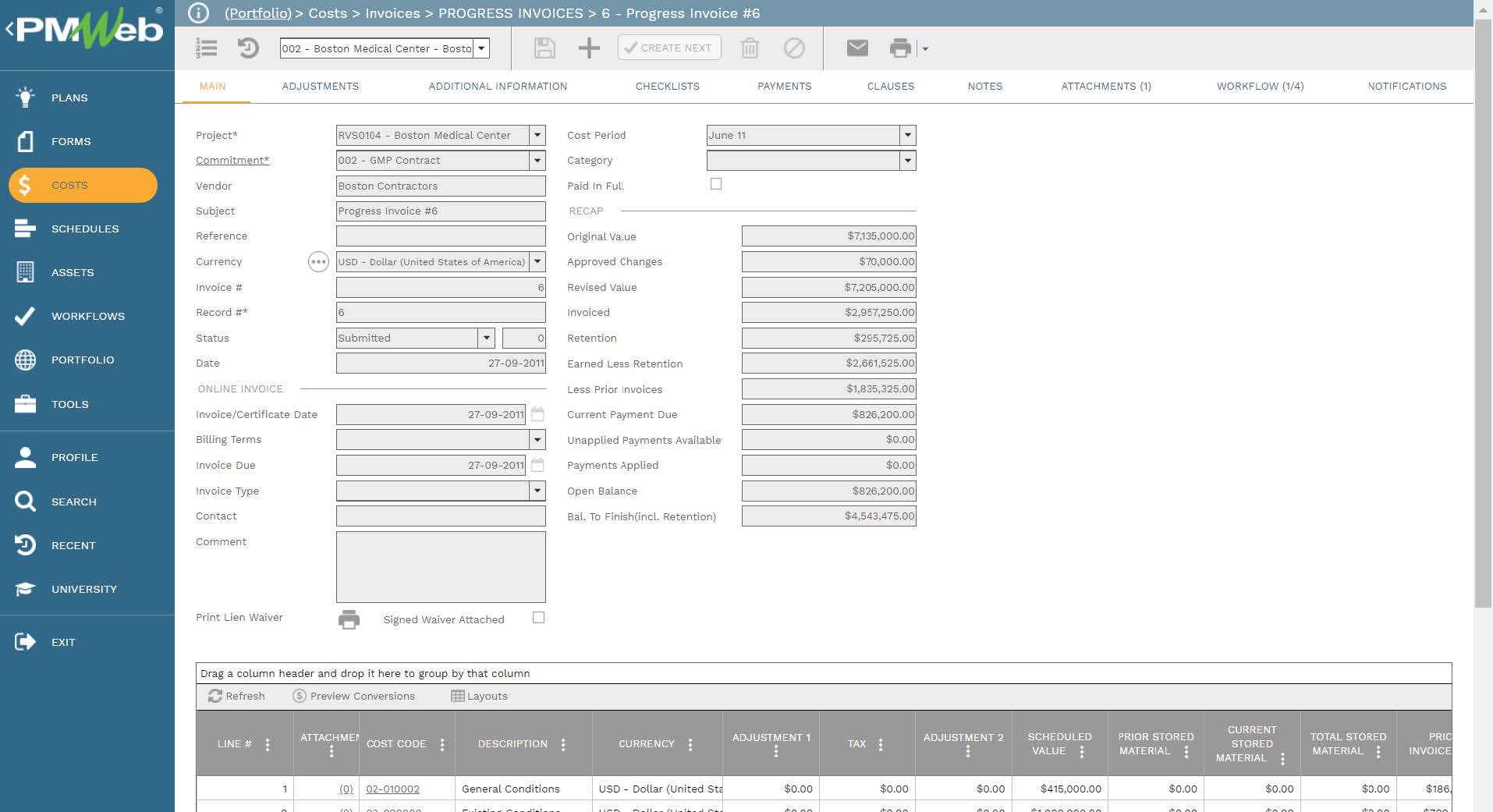
For all non-commitment invoices, the PMWeb miscellaneous invoices module captures all those submitted invoices whether they were approved or not. The items included in those invoices can also be linked to the project schedule activity they are associated with. The status field in the miscellaneous invoices module determines if the invoice was approved or submitted.
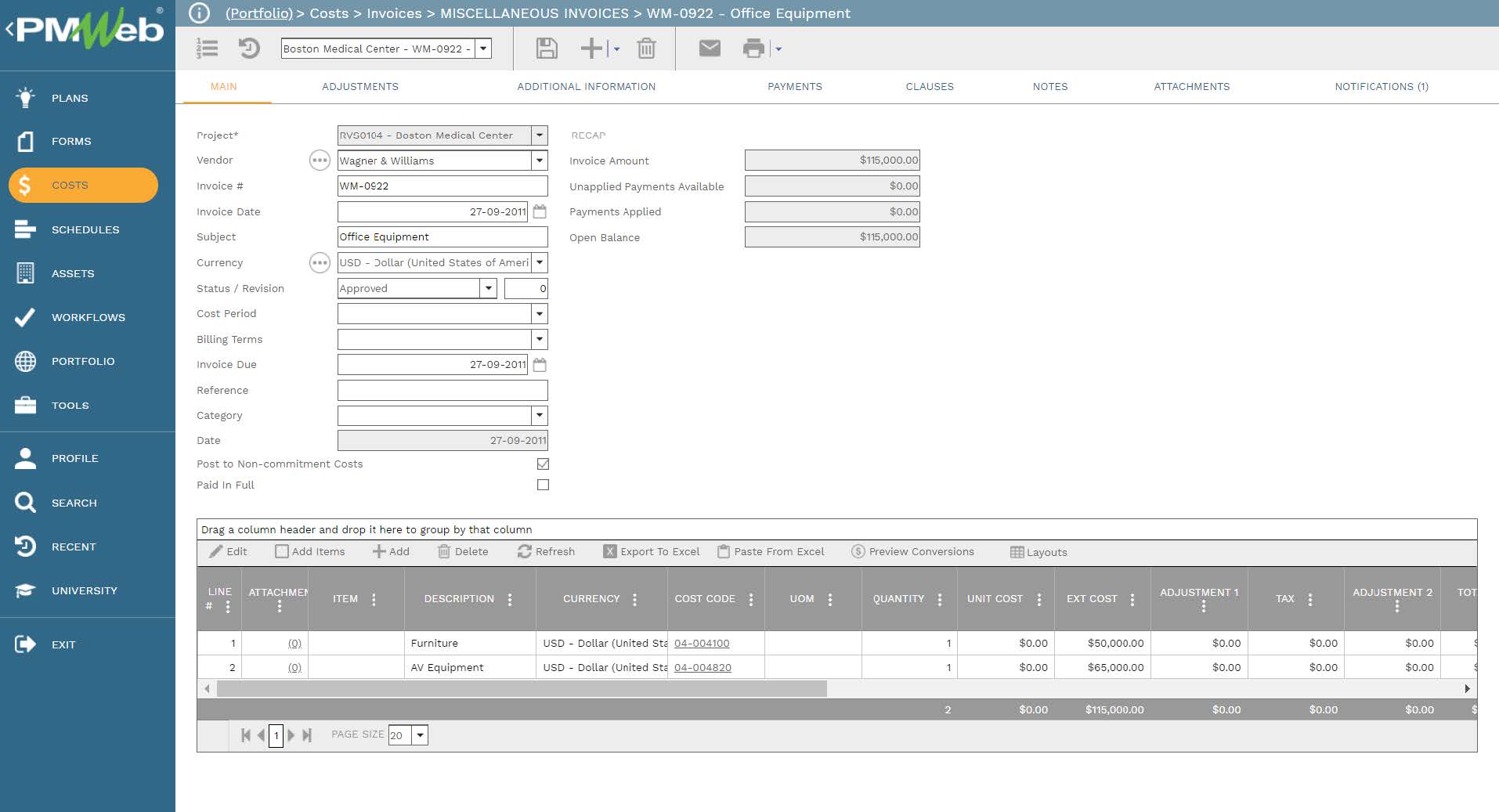
For approved work in place and material delivered to the construction site or to designated project owner warehouses that have been approved but not yet invoiced, the PMWeb production module captures those details on weekly basis. PMWeb allows using this captured data to generate the interim progress invoice at the end of the financial period. This expedites the preparation of the monthly interim progress invoice.
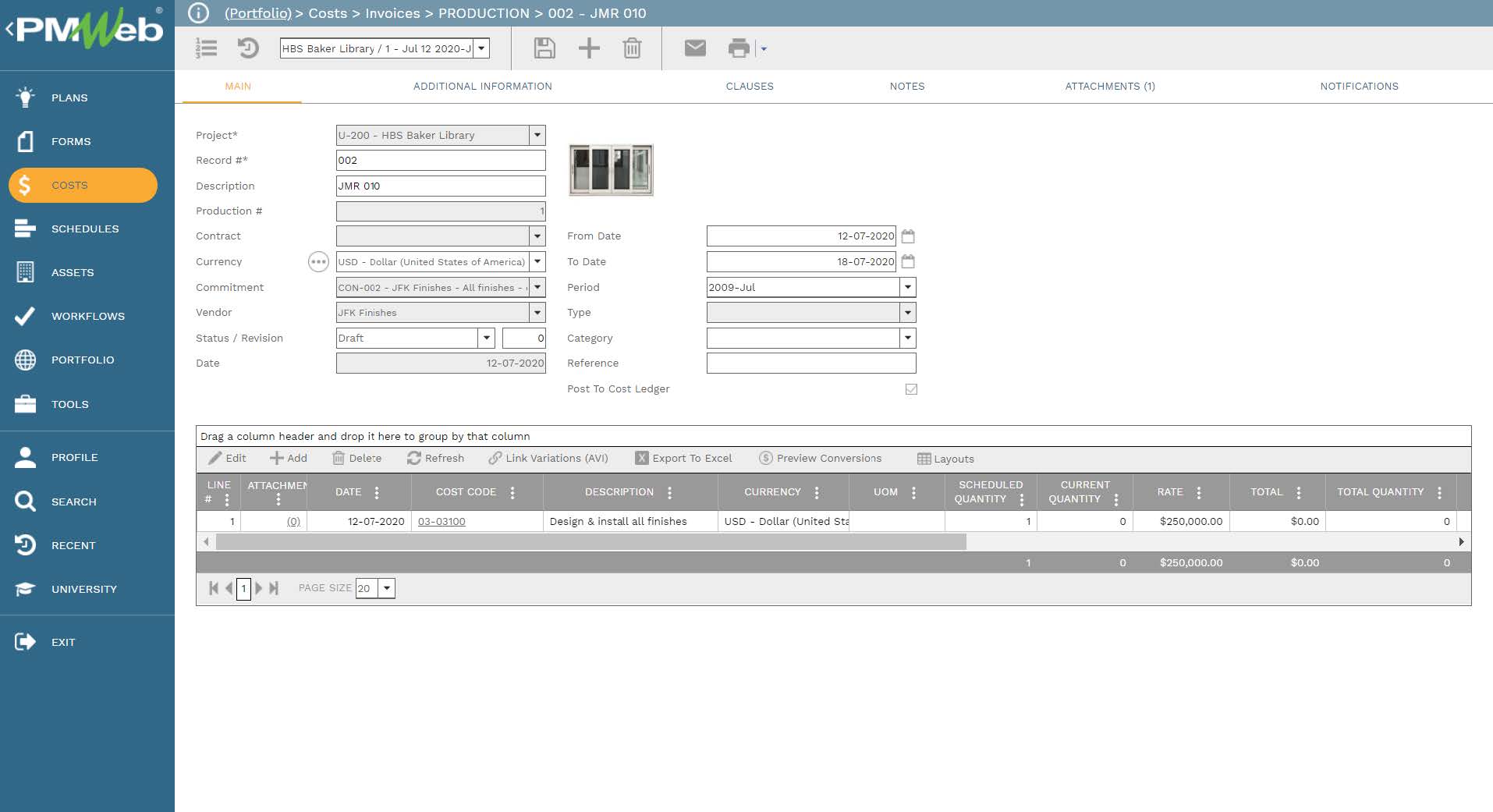
The last PMWeb module to be used in capturing actual costs is the timesheet module. This captures the actual labor and equipment resource hours spent on the project but not included in any of the commitment contracts. The spent hours could have different pay types to allow for regular, weekend, overtime, and holiday working hours. Each reported resource entry can be associated with the project schedule activity that it relates to.

If there is a requirement to capture actual cost that is not captured in any of the PMWeb modules detailed above, then the PMWeb journal entry module can be used to capture those actual cost expenses. This ensures that there is a single system to store all actual cost data regardless of what systems were originally used to capture the cost data. The journal entries can also be integrated with the organization’s financial system in case there is a requirement to capture those non-commitment expenses from the organization’s financial system. Nevertheless, this practice should not be encouraged and should be limited to the absolute minimum.
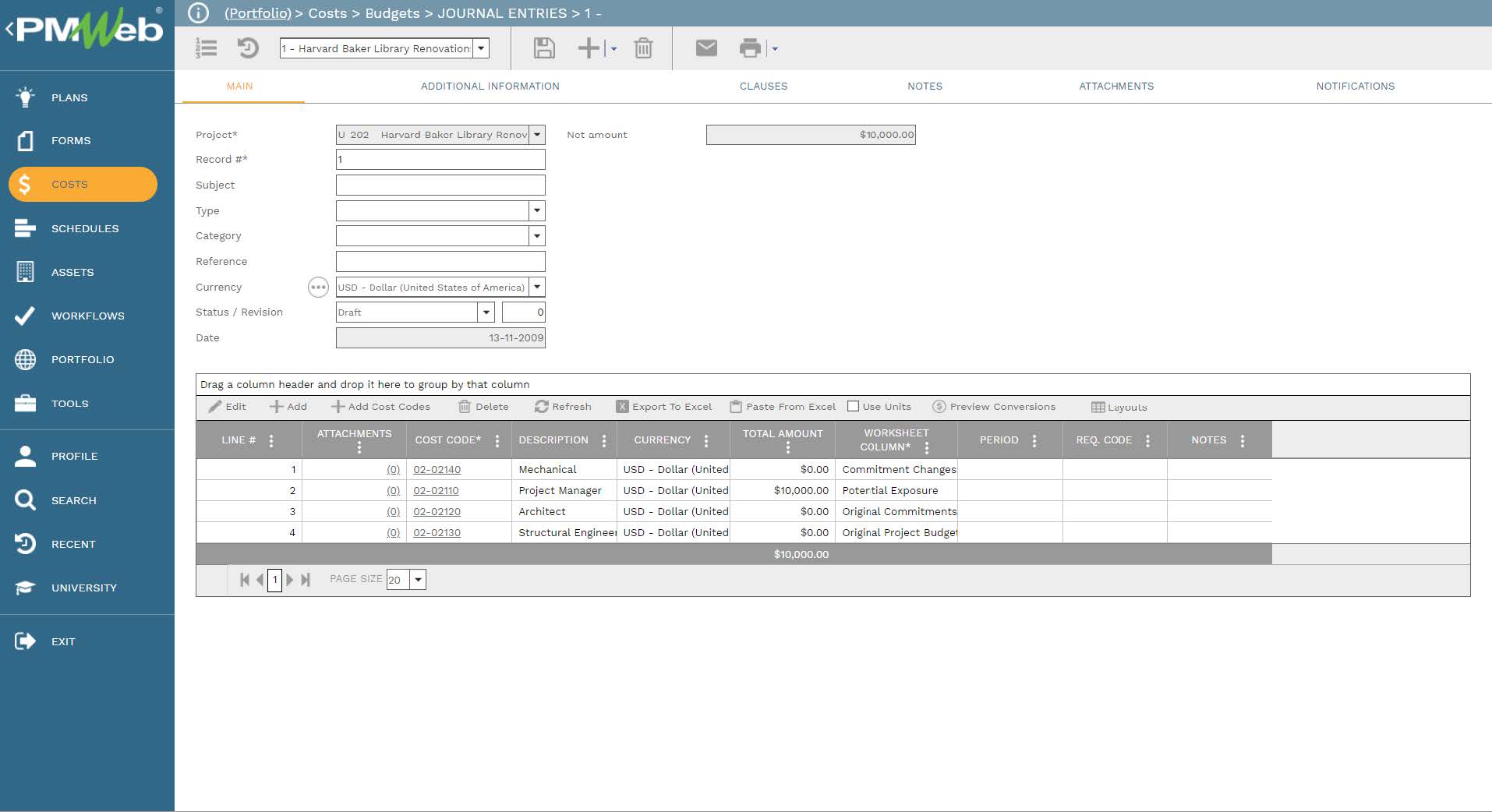
Regardless of the PMWeb module used to capture the actual cost values, all line items of those business processes’ transactions are automatically captured in the PMWeb cost ledger. The ledger can be filtered to only display actual cost data for which it is grouped into commitment and non-commitment actual cost. Then each category is grouped by the document type which was the source for the actual cost. Finally, it is filteded by whether this actually is approved or pending approval.
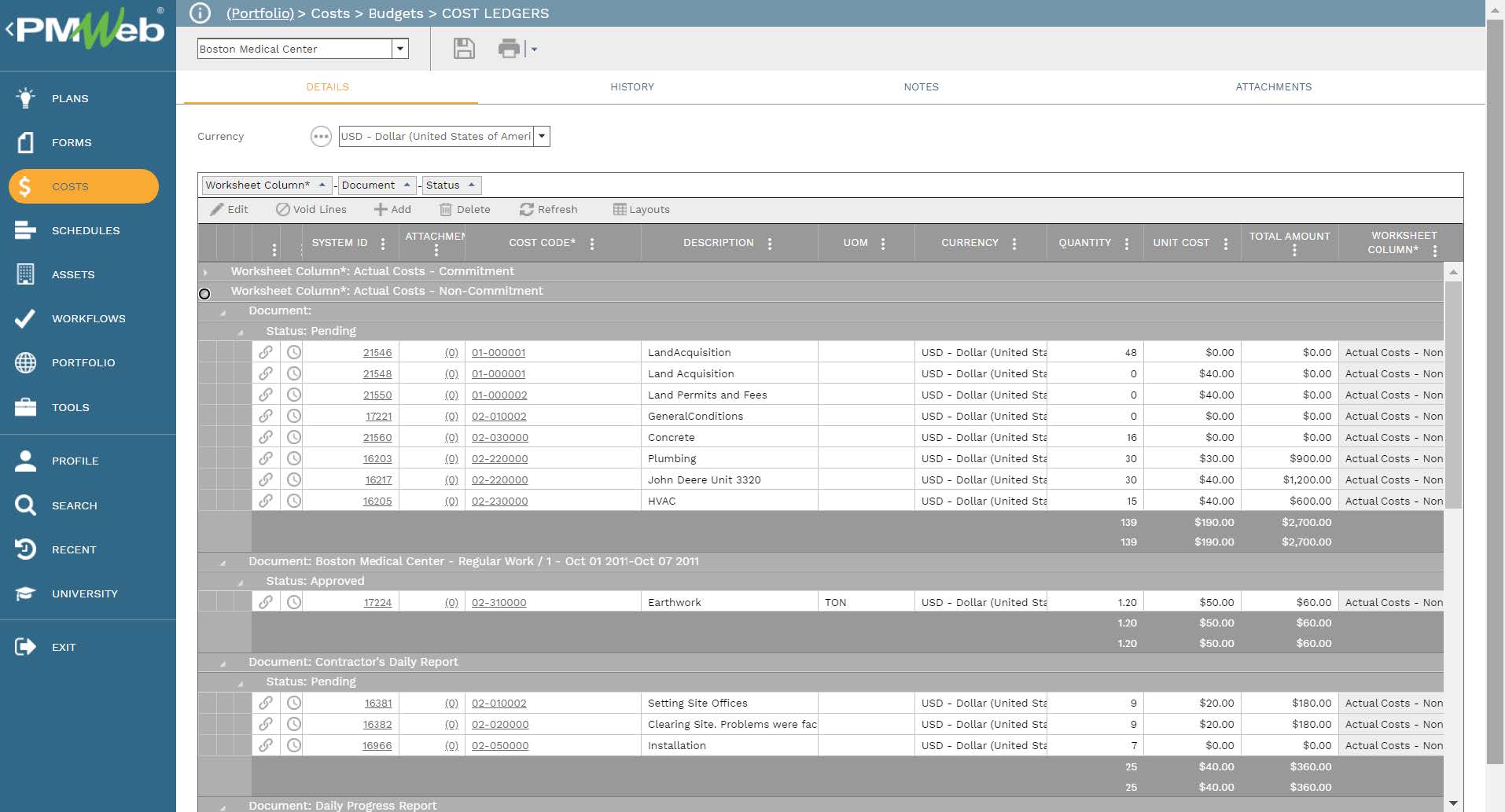
This actual cost data captured in PMWeb provides real-time and trustworthy data to provide a single version of the true financial performance reporting whether earned value method (EVM) was used or not. PMWeb cost worksheet module provides a quick visualization of all commitment and non-commitment actual cost data whether this was approved or pending approval. In addition, the estimate to complete (ETC) or forecast to complete values can be displayed if they were captured in the PMWeb forecast module. The cost worksheet displays approved and pending approval estimates to complete (ETC) values. The reader of the cost worksheet can drill down to the record that was used to capture the actual cost data as well as have the option to export the data to MS Excel. Similar to all other PMWeb business processes, reports can be used to display and share the actual cost information.
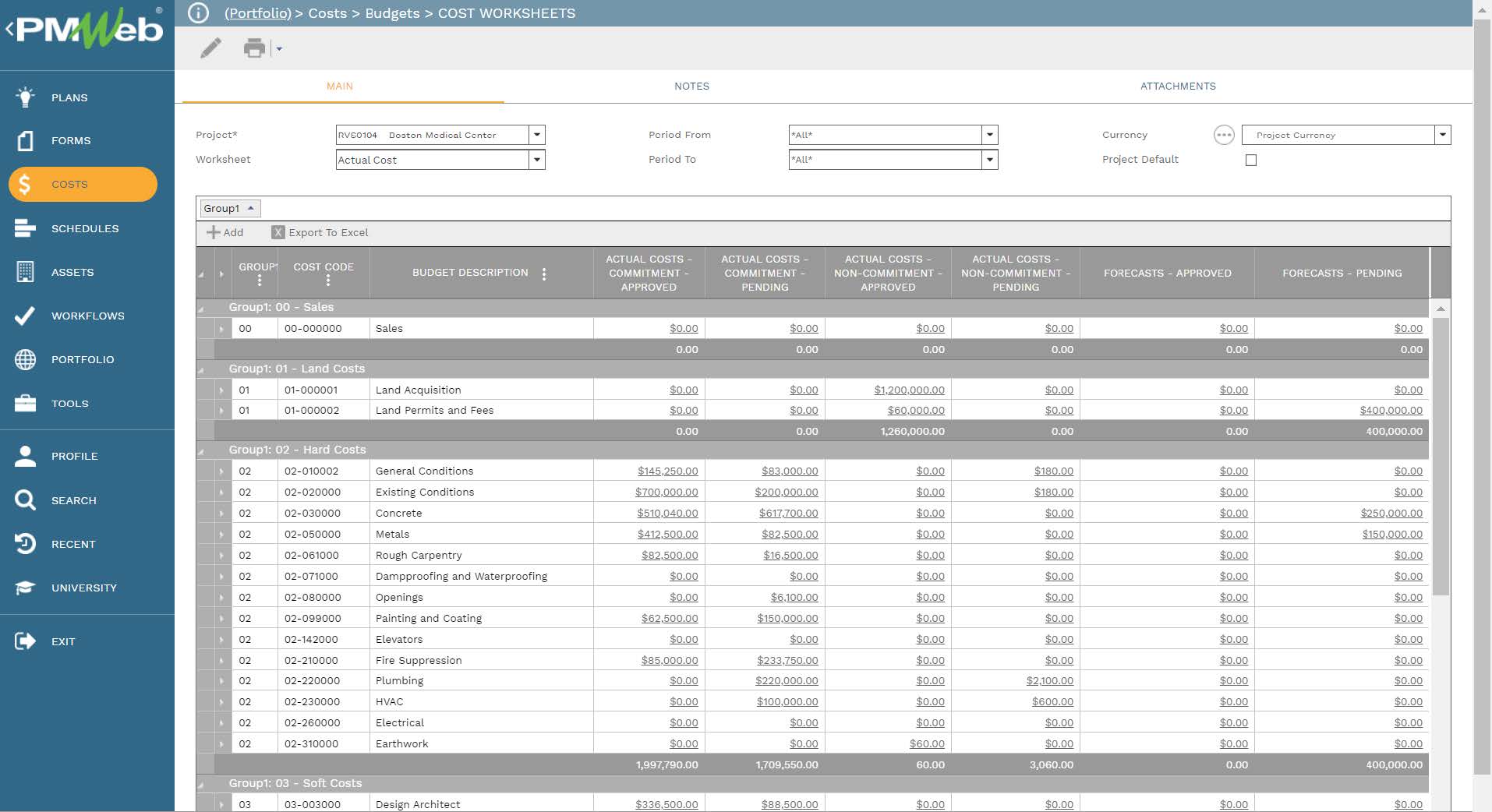
Similar to all other business processes managed in PMWeb, the project team can attach all supportive documents to each cost management and timesheet business process template detailed above. It is highly recommended to add details to each attached document to better explain to the reader what is being attached and viewed. In addition, links to other relevant transactions or records of other business processes managed in PMWeb can also be added.

It is also highly recommended that all those supportive documents, regardless of their type or source, get uploaded and stored on the PMWeb document management repository. PMWeb allows creating folders and subfolders to match the physical filing structure used to store hard copies of those documents. Permission rights can be set to those folders to restrict access to only those users who have access to do so. In addition, PMWeb users can subscribe to each folder so they can be notified when new documents are uploaded or downloaded.

To enforce transparency and accountability in managing cost management and timesheet business processes, a workflow needs to be added to each template to map the submit, review and approve tasks, role or roles assigned to each task, task duration, task type, and actions available for the task. The workflow can be configured to include the approval authority levels as set in the Delegation of Authority (DoA) document.
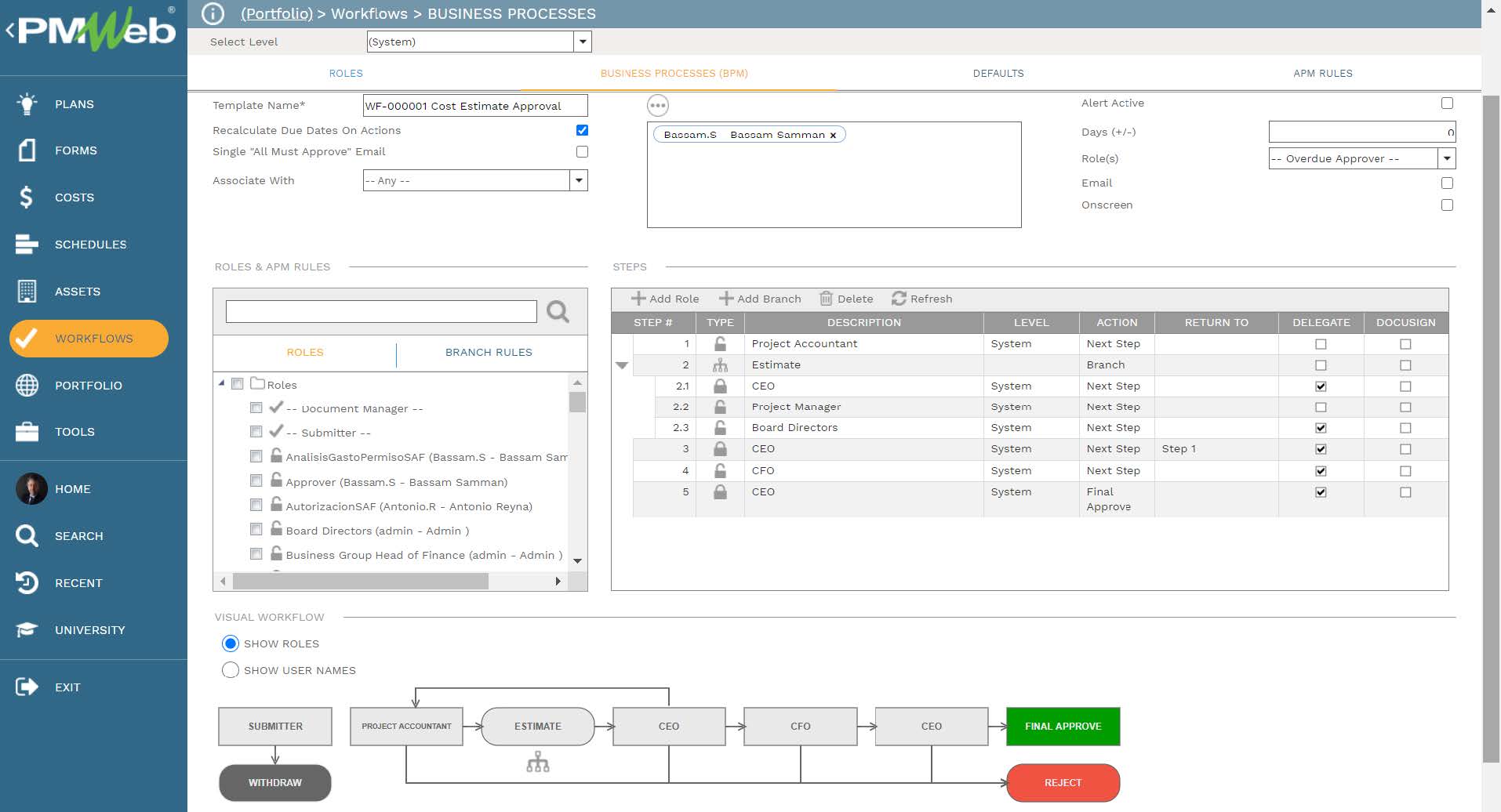
When any of the cost management business processes are submitted for review and approval, the workflow tab available on the relevant template captures the planned review and approve workflow tasks for each transaction as well as the actual history of those review and approval tasks. The captured workflow data includes the actual action data and time, done by who, action taken, comments made, and whether team input was requested.
